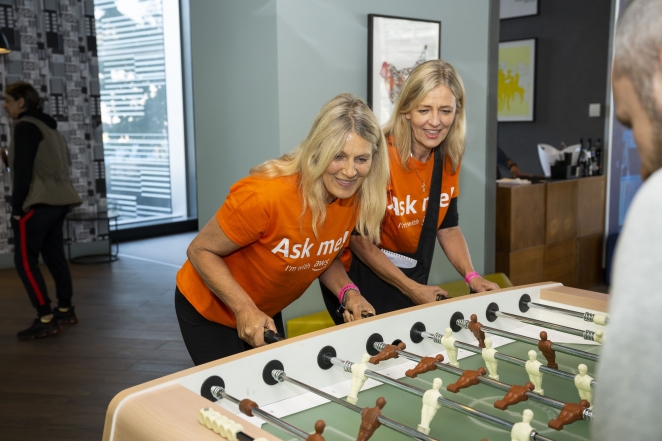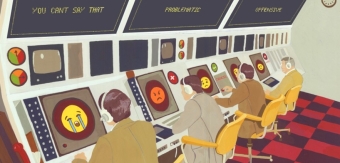What’s your most memorable burger? We’re guessing one stands out. And, through clever event design, you can make your events just as memorable for attendees as that burger is for you.
However, when it comes to delivering event experiences, the rewards far exceed just having a fantastic meal.
There is the opportunity of strengthened relationships and all-important customer acquisition. And, there is the potential knock-on effect of word of mouth, inspired by the experience.
In short, creating memorable experiences can have a positive psychological impact on attendees and give your business a competitive edge.
In this blog we’ll explain the fundamentals of smart event designing and how to use them to create an event experience that can put your business at the forefront of customers’ minds.
What is event design?
Event design is the creative vision behind an event. It shapes the look and feel, bringing together elements of aesthetics and style to craft an immersive, memorable journey for attendees.
In this sense, it differs from event planning, which covers the logistics like co-ordination, administration, and financial planning.
While these are all vital to the running of the event, the event design makes sure that the attendees feel engaged and inspired.
Picture strategic lighting that creates just the right mood, an intuitive layout that encourages interaction and networking, thematic elements that align with your brand’s identity, and state of the art technology that gives presentations that wow factor.
Through well-crafted event design, attendees leave the event with a lasting impression.

How to create memorable event experiences using event design
What makes something memorable?
In the case of your favourite burger, it was likely a combination of sublime presentation, sensory engagement, and an unexpected but welcome element that ingrained itself in your memory like a bookmark.
And, though it might seem unlikely, a similar recipe can apply to event design.
Below we’ll discuss some event designing elements that are key to standing out in your prospective customers’ minds.
Choose a venue that works for your aims and objectives
The real estate adage is location, location, location. And, although there are more elements to consider in event design, the venue is a crucial ingredient in the mix.
One of the main aspects of creating a memorable event is atmosphere. There needs to be an air of excitement and energy that inspires attendees. And, in order to create this, you need a venue that can help bring your vision to life.
Have you ever imagined a grand gala experience in a historic mansion or perhaps a corporate conference in a high-tech conference room overlooking the city?
Does the venue lend itself to decor setup or will you need to come up with creative solutions that potentially extend setup times? And, of course, will attendees find it easy to arrange transport to the venue or will they be put off by convoluted travel requirements?
These are all questions to ask yourself before you begin scouting venues. This way, you can choose the venue that works best for your aims and objectives and can create an unforgettable experience successfully.
Transform the space to suit your theme
Once you have settled on a venue to suit your requirements, you can begin fitting it to suit your vision.
In order to be memorable, you are aiming to invoke passion. So, consider how you can create an environment that will stoke that passion in attendees.
An event showcasing travel, for example, might engage attendees by simulating the excitement of travel. This could be done through strategically-placed exhibitions of sand and palm trees or through scale models of landmarks from the world’s famous cities.
Similarly, an event showcasing security could make use of pristine white panelling and laser beams to create an immersive atmosphere.
Through immersive theming, it’s even possible to make a space in Berlin feel like the Caribbean, which was the case at the Bacardi ‘Sound of Rum’ event.

Create a flow
Flow is an important element of event design for several reasons. Perhaps the most important of these being impact and optimisation.
Beginning with impact, if you want to create a lasting impression through a positive experience, it helps to limit panic and indecision. It’s no coincidence that a walk through Ikea’s display presentations is a more engrossing experience than erratically darting through a busy market, and one that prompts customers to buy more.
Secondly, creating a flow helps you optimise your event layout. This allows for a more economical use of space, helping you fit more in without the event feeling overbearing for attendees.
Bring in storytelling
Brand storytelling is hugely effective in marketing, and events are marketing in one of its purest forms.
Use the experience to illustrate the elements that are important to your business, such as its culture, its impact, or its environmental efforts.
You can do this through:
-
talks or presentations on the inner operations of the business
-
physical media like films, photos, banners, etc.
-
the presence of staff who can give real-life testimonials and interactions
One of the major benefits of storytelling is making your business seem more human and thus more memorable. Faceless companies can all too easily fall by the wayside, but brands that connect with people on a personal level have an easier time being remembered.
Titillate the senses
It’s important not to underestimate people’s psychological responses to sensory engagement.
Pleasant aromas can be calming or can stoke an appetite. Dramatic lighting can create the impression of grandeur. And, carefully-picked music can stir a wide range of emotions.
So, when it comes to event designing, consider how you can bring in these elements to enliven the senses of attendees and create an air of drama, like we did at the AWS and Natural History Museum partnership presentation.
Introduce interactive elements
With the prevalence of voice commands, AI chat, and virtual reality, interactivity is a huge part of modern life. So, to help your event’s memorability, consider bringing in interactive elements.
You could do this through:
-
virtual reality
-
interactive displays
-
photo booths
-
party games
-
karaoke
This interaction promotes attendees’ participation, which is more likely to stand out in their memory than simply observing. After all, which is more likely to answer your questions - reading a review of a car or test driving it yourself?

When done well, event design can create an enjoyable, informative, and, importantly, memorable atmosphere for attendees. It uses creativity and ingenuity to deliver an experience that is immersive and inspiring.
And, when it comes to building customer relationships or acquiring new customers, inspiration is a very useful tool.







